 If you're considering building a new deck, choosing the right decking material is crucial for ensuring a durable, low-maintenance outdoor living space. One material that is becoming increasingly popular is Millboard decking. As a Millboard Approved Installer and following a recent visit to the factory, here are some reasons why Scully Decks recommend Millboard decking for your new deck:
In conclusion, Millboard decking is a durable, low-maintenance, and aesthetically pleasing option for your new deck. Its resistance to harsh outdoor conditions, low maintenance requirements, and eco-friendly features make it an attractive choice for homeowners looking to create a beautiful and functional outdoor living space. The safety features and warranty further solidify Millboard decking as a smart investment for your home.
0 Comments
When it comes to creating an outdoor living space, there are a variety of structures to choose from, including pergolas, gazebos, and awnings. Each structure has its unique advantages and disadvantages, and it's essential to understand the differences between them to make an informed decision for your Irish outdoor living space.
 A gazebo is a freestanding, octagonal or circular structure with a roof and open sides. Gazebos are typically made of wood or vinyl and are designed to provide shade and shelter from the elements. Gazebos can be used for outdoor dining, entertaining, or as a relaxation space. They can also be used as a focal point in a garden, providing a visual anchor for surrounding landscaping features.  An awning is a roof-like structure that extends from the side of a building, typically over a door, window, or patio. Awnings are typically made of fabric, metal, or a combination of both and are designed to provide shade and protection from the elements. Awnings can be fixed or retractable, allowing you to control the amount of shade and sun exposure in your outdoor living space. Awnings are ideal for creating a shaded seating area or protecting outdoor furniture from weather damage. In conclusion, pergolas, gazebos, and awnings each offer unique benefits and are suitable for different outdoor living spaces. Pergolas are ideal for creating a defined space with partial shade and a natural element, while gazebos provide complete shelter from the elements and a focal point in a garden. Awnings are perfect for creating a shaded seating area or protecting outdoor furniture from weather damage. When selecting a structure for your Irish outdoor living space, consider the function, style, and maintenance requirements to determine which option is best for your needs.
When it comes to creating an outdoor living space, there are a variety of materials to choose from, including composite decking and patio pavers. Both options have their advantages and disadvantages, but in this blog, we will focus on the benefits of composite decking and why it might be the right choice for your project.
Ground screw foundations, also known as screw piles or helical piles, are a type of foundation system that offers a variety of benefits compared to traditional concrete foundations. Here are some of the advantages of using ground screw foundations:
Become a more environmentally conscious contractorIn 2022, we are going to further reduce our impact on the environment and preserves natural resources. Some of the ways we plan to achieve this are:
3. Reducing the carbon footprint of our orders and deliveries, by:
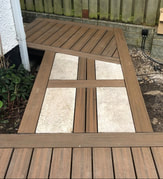 Granite inlay Granite inlay
5. Continue to REDUCE, REUSE and RECYCLE.
Instead of disposing of the left over granite pieces from an interior project, we incorporated them into the decking, creating a gorgeous flow from the inside out and reducing waste. On each decking project, we strategically lay deck boards in the direction that will reduce the amount of waste, saving costs and reducing waste. Please feel free to send us an EMAIL with any suggestions or tips on how we can improve our carbon footprint in 2022.
Recycled Plastic Wood - An Intro:At the start of the year, we made a commitment to become a more sustainable and environmentally conscience contractor. Check out our resolution here. One of the strategies we promised to implement, to reduce our carbon footprint, was to use products made from recycled material including Recycled Plastic deck framing material. We've received a lot of enquiries and interest about the nuances and value of the product. I have answered the most frequently asked questions in relation to the plastic below but, free to skip to the synopsis at the end for a brief summary. Most common questions:
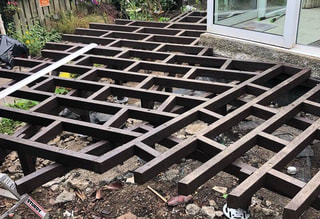 Plastic framing for wrap around deck Plastic framing for wrap around deck
2. Why do we recommend it?
Using a plastic wood alternative to construct a frame for a deck is an innovative, environmentally sound and quality solution to using traditional wood. It can withstand all weather conditions, requires no treating or painting and will out last any wooden structures ensuring we have zero call backs and giving our clients peace of mind that their investment is built to last!  Plastic planters built into deck Plastic planters built into deck
3. Is it more expensive than pressure treated timber framing?
Yes. The initial investment to purchase the plastic framing is higher than to purchase timber. It is also more time consuming to install so labour costs are higher, too. But, when you consider the time and money spent on treating and maintaining the wooden alternative, it is a sound long-term investment and will save money in the long-run. Synopsis Recycled Plastic Bundle Recycled Plastic Bundle
100% recycled material
100% maintenance free 100% weatherproof Made from a combination of mixed waste plastics Doesn’t biodegrade 40+ year lifespan 20 year warranty Rot proof, even if FLOODED Solid core and coloured throughout Load bearing Flame resistant Compatible with construction tools and standard wood fixings More expensive than traditional wood framing, initially We purchase all of our Recycled Plastic from Irish Recycled Products. Feel free to check out their website for a more information.  When planning your new deck, one of the key decisions you will make is what deck boards to use. The most popular options are WOOD or COMPOSITE. The choice you make will impact your budget, aftercare requirements and the style, size and longevity of your deck, so it is important to weigh up the pros and cons of each. INTRO TO WOODEN DECK BOARDS: Red Batu Hardwood Red Batu Hardwood All wooden decking material is a product of nature so naturally there will be a HUGE variation in the strength and performance, colour and texture of each. There are countless varieties of wooden deck boards to chose from, including:
There is a massive difference in the cost and availability of each, E.G. Ipe Tropical Hardwood is much more expensive, has to be imported from Southern or Central America but lasts 50 years as where pressure treated boards will cost €15 per board, are readily available but have much shorter life span. INTRO TO COMPOSITE DECK BOARDS: Composite (Fiberon) Deck Composite (Fiberon) Deck Similarly, composite decking comes in several forms; ranging from solid PVC plastic, to solid composites using 100% recycled plastic, to products that blend plastics and natural wood or bamboo fibres. There are approximately 500 different brands of composite to chose from, including: Millboard Flooring, Teranna Ever-Deck, TREX, Fiberon and TimberTech. All 500 brands are not created equally and come with their own unique strengths and weaknesses. Prices can range from €35.00 to €180.00 per board. When deciding on which composite to construct your deck from will need to consider; budget, style, texture, colour, the environmental impact, availability and your personal preference.
|
Author: Noreen Tierney.With a background in fitness, I am 100% NOT a deck nerd and likely have no business writing any sort of decking related blog. However, after five years as the "behind-the-scenes responder" to emails, texts, DM's & PM's requesting Martins' decking expertise and then figuring out how to unravel his technical response to reply to queries in layman/woman terms, I figured I'd add a blog to the website to, hopefully, save visitors hours of online research and help with their decking/pergola/gazebo decisions. |

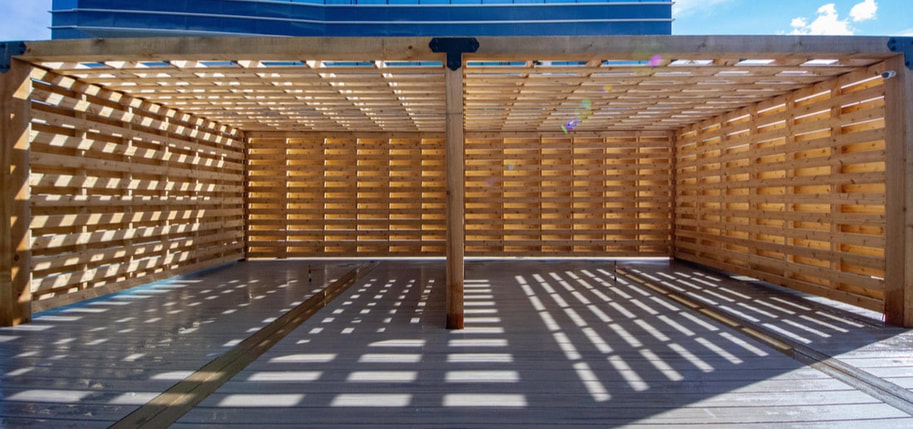



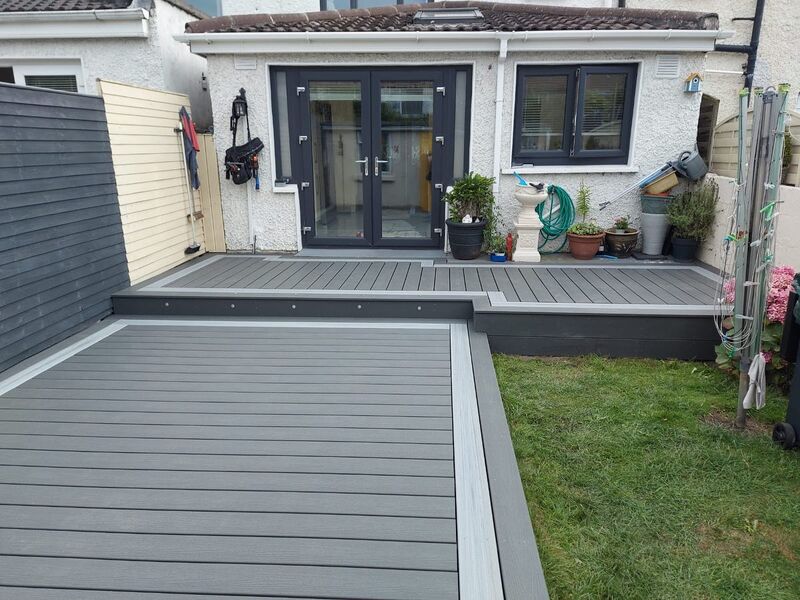









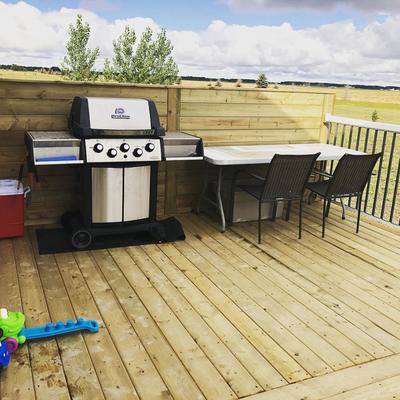



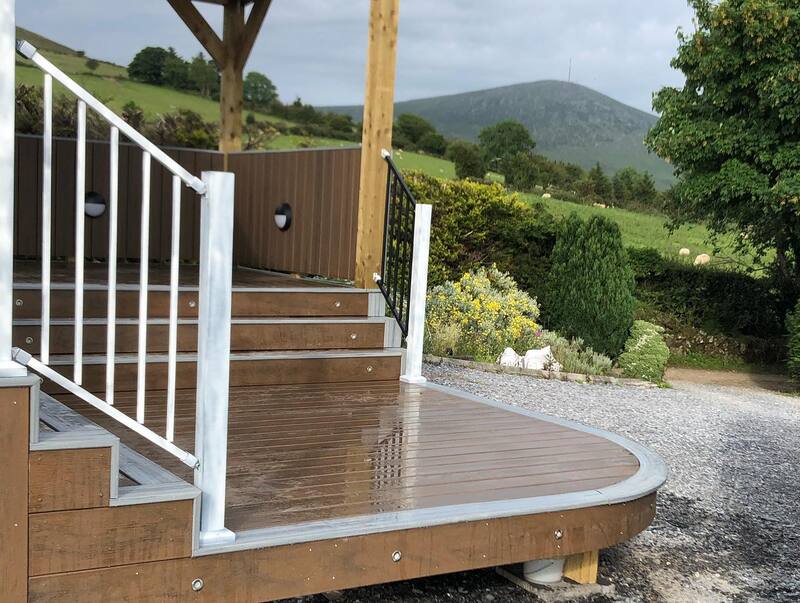

 RSS Feed
RSS Feed